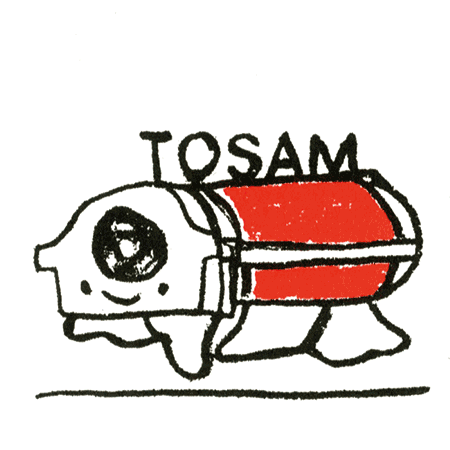Can you have your own Riso print made at TOSAM?
Yes, at Tosam you can have your own Riso print made! You can send your files and then it will be printed for you. Unfortunately, you can’t come and do the riso printing yourself (yet), but sometimes it is possible to come and have a look during the printing. Click on quote to place an order.

What is Riso print and what makes it so special?
Riso print is a fun and sustainable printing technique that gives each design a unique look. The colours are bright and vibrant, and because the process is a bit unpredictable, each print gets its own character. Perfect for art prints, posters and zines!
At Tosam Studio we work with a Riso printer that prints layer by layer, just like screen printing. Instead of soaking into the paper, the ink remains on the surface due to the vegetable oil in the ink. This gives the colours a beautiful intensity, but it also takes a little longer for the ink to dry. Sometimes the feed wheels leave subtle traces or the ink gives off light—a characteristic that contributes to the raw, handmade character of Riso print.

Why should I choose Riso print?
There are many reasons why Riso printing is so special, but here are the main ones:
Sustainable and environmentally friendly
Riso print is one of the most sustainable printing techniques. The ink is vegetable based, the printing process uses little energy and we often print on recycled paper. Perfect for those who want to make a conscious choice for the environment!
Bright colours and unique effects
The colours you get with Riso are deep, intense and vibrant. Because the ink stays on the paper, you get a texture that is not only beautiful to see, but also to touch. The result is always a little different, which makes each piece unique.
Handmade character
With Riso print you don’t get perfect, tight prints. That’s the charm! Small imperfections, such as light traces of the feed wheels or a little bit of ink transfer, make your print authentic and full of character. It is the analogue that digital techniques often lack.
Perfect for small print runs
Whether you’re making a zine, an art print, or posters for an event—Riso printing lets you work relatively quickly and affordably. Ideal for short runs where you want to feel like every print is special.

At Tosam Studio we love the playful, artisanal look of Riso print and help you get the most out of your design. Whether you have an artistic creation or a business print, Riso print always adds something extra to your work.
How do you make a design suitable for Riso printing?
Riso print has a unique look and works just a little differently than digital or offset printing. To get the most out of your design, there are a few things you can take into account.
Colors: think in layers
Riso works with one color per print run, similar to screen printing. Instead of mixing CMYK, you use separate colors that can be printed on top of each other. This produces beautiful mixed colors and unexpected effects. Tip: work with spot colors and experiment with transparency to create surprising transitions!
File format and structure
Submit your design as a PDF with each color on a separate page. This way, the separation between the colors is maintained and we can print the layers separately. Working in grayscale per layer is useful: the light tones are printed more economically, while dark parts are printed fuller.
Paper and texture
Riso ink does not soak into the paper, but often lies on top of it. This effect can vary depending on the paper type. Riso print only works with matte, uncoated papers.
There may be small imperfections
Riso print is not digital print: small jumps between the colors and subtle print marks are part of it. This gives your design a crafted, analogue look. Do you want better alignment? Then leave some extra margin between the colors or experiment with trapping.

At Tosam Studio we are happy to help you optimize your design for Riso print. Are you unsure about something? Contact us and we will think along with you!

